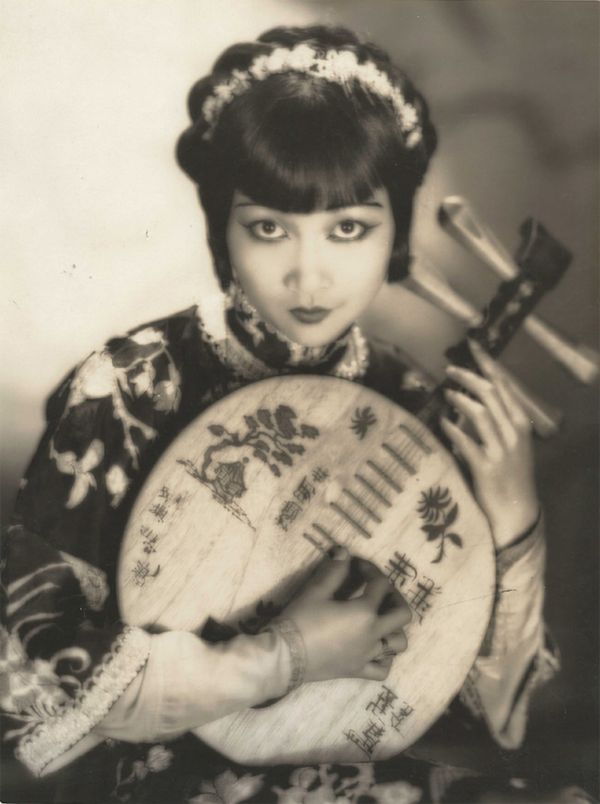
Anna May Wong – First Chinese American Movie Star
Anna May Wong (born Wong Liu Tsong; January 3, 1905 – February 3, 1961) was an American actress, considered to be the first Chinese American Hollywood movie star, as well as the first Chinese American actress to gain international recognition. Her varied career spanned silent film, sound film, vaudeville, cabaret, television, stage and radio.
A Notable Legacy
But far more than a famous international star, Wong’s image and career left a notable legacy. Through her films, public appearances and prominent magazine features, she helped to humanize Chinese Americans to mainstream American audiences during a period of intense racism when laws discriminated against Chinese immigration and citizenship.
In addition, between 1939 and the end of the Second World War, she made few films, instead engaging in events and appearances in support of the Chinese struggle against Japan as well as actively supporting the plight of Chinese refugees through United China Relief.
A Hollywood Beginning
Anna May Wong fell in love with movies when she began going to Nickelodeon movie theaters and becoming obsessed with the “flickers“, skipping school and using her lunch money in order to attend.
As happenstance would have it, she was a child living in Los Angeles at the same time that U.S. motion picture production was relocating from the East Coast to LA. Her acting career began when, without her father’s knowledge, a friend of his with movie connections helped her join 300 female extras to carry a lantern in Alla Nazimova‘s silent film, The Red Lantern (1919). For the next two years she worked steadily as an extra in various movies. Finding it difficult to keep up with both her schoolwork and her passion, Wong dropped out of Los Angeles High School in 1921 to pursue a full-time acting career.
At the age of 17, Wong played her first leading role, in the early Metro two-color Technicolor silent film, The Toll of the Sea. The story was based loosely on Madama Butterfly. Variety singled Wong out for praise, noting her “extraordinarily fine” acting. The New York Times commented, “Miss Wong stirs in the spectator all the sympathy her part calls for and she never repels one by an excess of theatrical ‘feeling’. She has a difficult role, a role that is botched nine times out of ten, but hers is the tenth performance. Completely unconscious of the camera, with a fine sense of proportion and remarkable pantomimic accuracy … She should be seen again and often on the screen.”
Despite such reviews, Hollywood proved reluctant to create starring roles for Wong; her ethnicity prevented U.S. filmmakers from seeing her as a leading lady. She spent the next few years in supporting roles providing “exotic atmosphere”. Film producers capitalized on Wong’s growing fame but because of the law, in their eyes, she was considered a supporting actress.
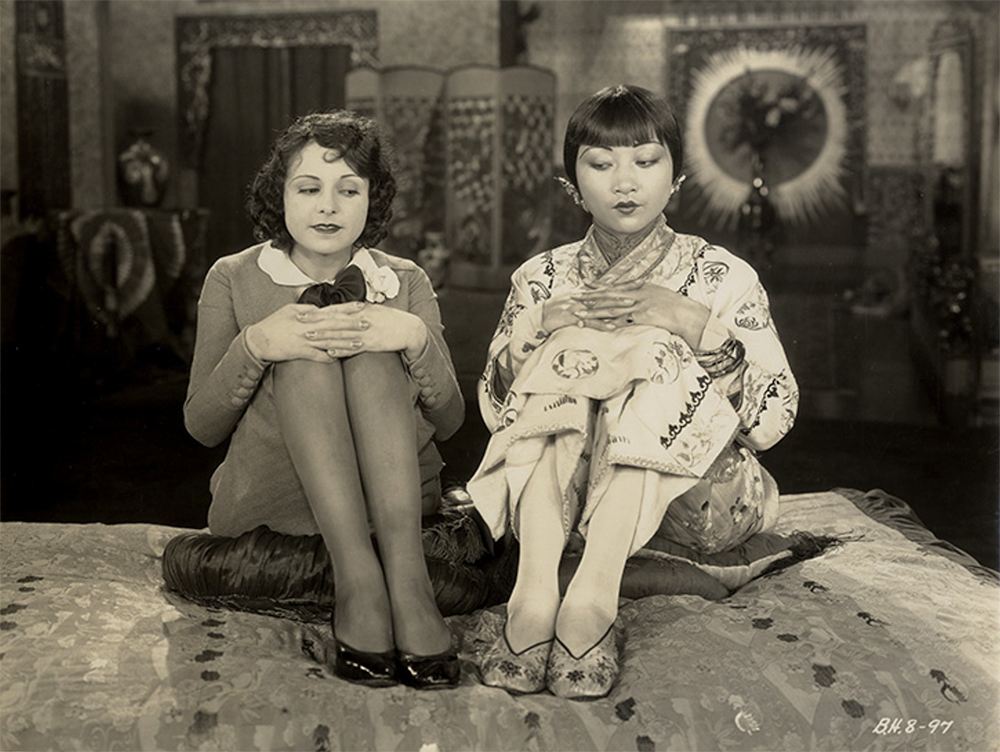
The Birth of a Star
At the age of 19, Wong was cast in a supporting role as a scheming Mongol slave in the 1924 Douglas Fairbanks picture The Thief of Bagdad. Playing a stereotypical “Dragon Lady” role, her brief appearances on-screen caught the attention of audiences and critics alike. The film grossed more than $2 million and helped introduce Wong to the public. It soon became evident that Wong’s career would continue to be limited by American anti-miscegenation laws, which prevented her from sharing an on-screen kiss with a person of another race, even if the character was Asian, but being portrayed by a white actor.
Frustrated by the stereotypical supporting roles (Hollywood’s Asian female characters tended toward the naïve and self-sacrificing “Butterfly” or the sly and deceitful “Dragon Lady”) Wong left for Europe. In an interview in Film Weekly in 1933, Wong complained about her Hollywood roles: “I was so tired of the parts I had to play. There seems little for me in Hollywood, because, rather than real Chinese, producers prefer Hungarians, Mexicans, American Indians for Chinese roles.”
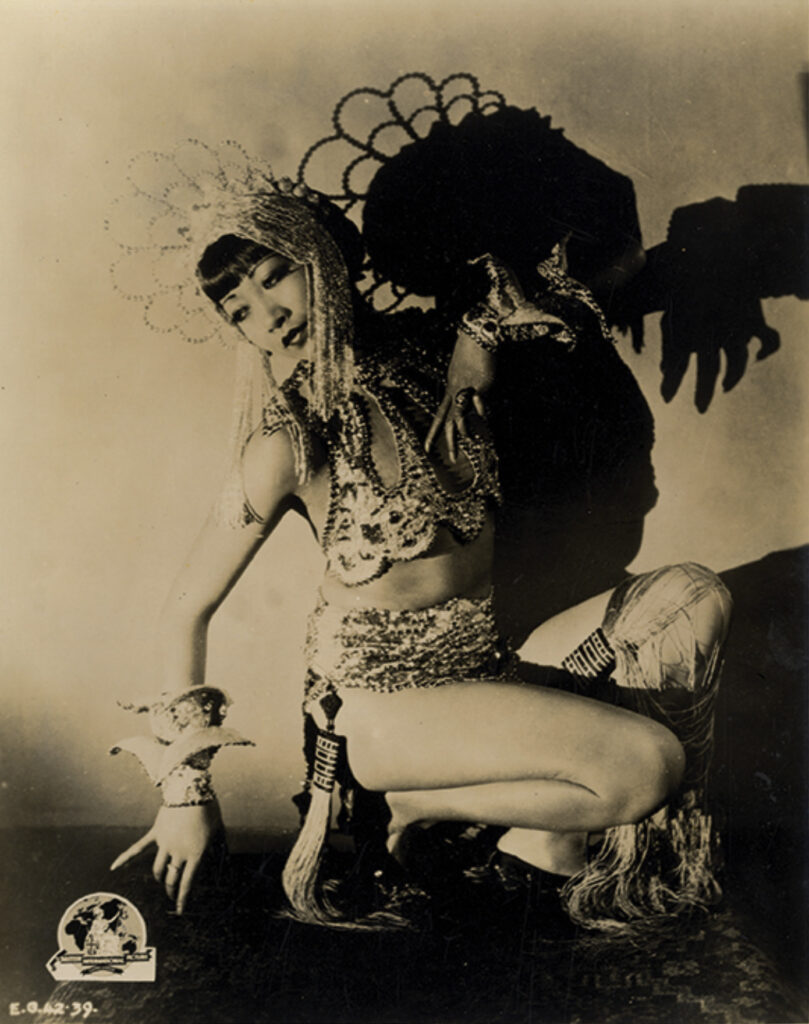
A European Sensation
In Europe, Wong became a sensation, starring in notable films such as Schmutziges Geld (aka Song and Show Life, 1928) and Großstadtschmetterling (Pavement Butterfly). Of the German critics’ response to Song, The New York Times reported that Wong was “acclaimed not only as an actress of transcendent talent but as a great beauty”. In Vienna, she played the title role in the operetta Tschun Tschi in fluent German. An Austrian critic wrote, “Fräulein Wong had the audience perfectly in her power and the unobtrusive tragedy of her acting was deeply moving, carrying off the difficult German-speaking part very successfully.”
Wong made her last silent film, Piccadilly, in 1929, the first of five British films, in which she had a starring role. The film caused a sensation in the UK. Gilda Gray was the top-billed actress, but Variety commented that Wong “outshines the star” and that “from the moment Miss Wong dances at the rear of the kitchen, she steals ‘Piccadilly’ from Miss Gray.”
Forgotten for decades after its release, Piccadilly was later restored by the British Film Institute.Time magazine’s Richard Corliss calls Piccadilly Wong’s best film, and The Guardian reports that the rediscovery of this film and Wong’s performance in it has been responsible for a restoration of the actress’ reputation.
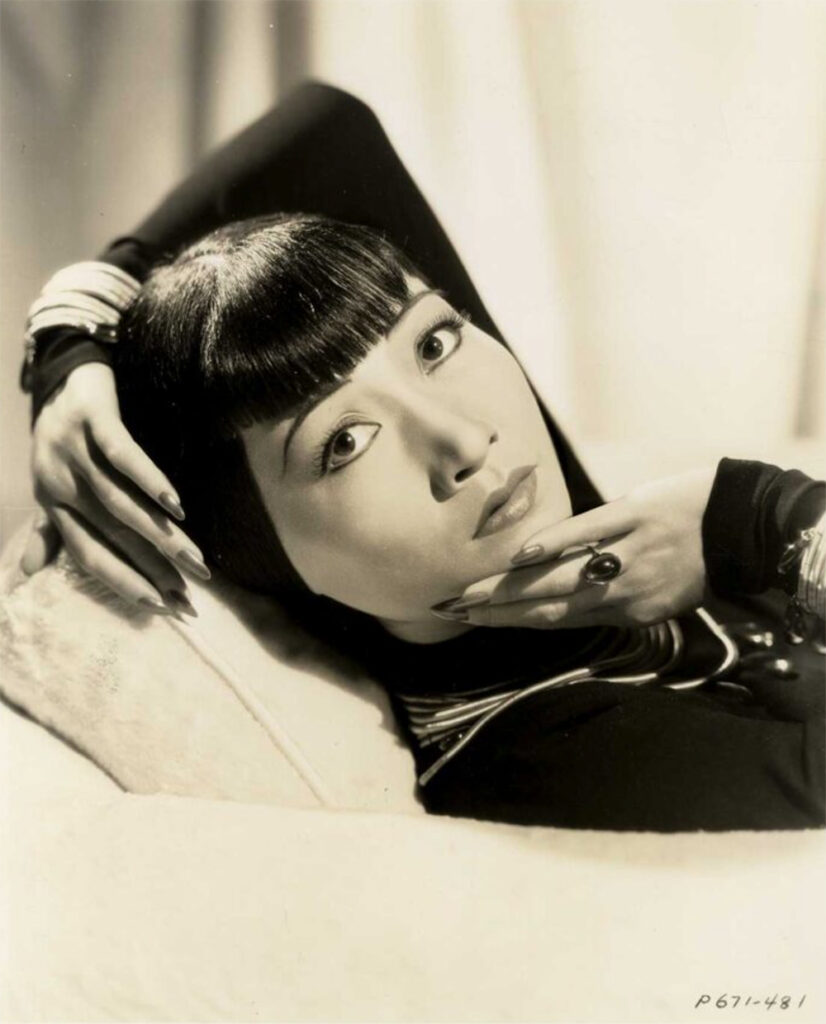
Return to Hollywood
During the 1930s, American studios were looking for fresh European talent. Ironically, Wong caught their eye, and she was offered a contract with Paramount Studios in 1930. Enticed by the promise of lead roles and top billing, she returned to the United States. With the promise of appearing in a Josef von Sternberg film, Wong accepted another stereotypical role – the title character of Fu Manchu‘s vengeful daughter in Daughter of the Dragon (1931). This was the last stereotypically “evil Chinese” role Wong played, and also her one starring appearance alongside the only other well-known Asian actor of the era, Sessue Hayakawa.
Wong appeared alongside Marlene Dietrich as a self-sacrificing courtesan in Sternberg’s Shanghai Express. Her sexually charged scenes with Dietrich have been noted by many commentators and fed rumors about the relationship between the two stars. Though contemporary reviews focused on Dietrich’s acting and Sternberg’s direction, film historians today judge that Wong’s performance upstaged that of Dietrich.
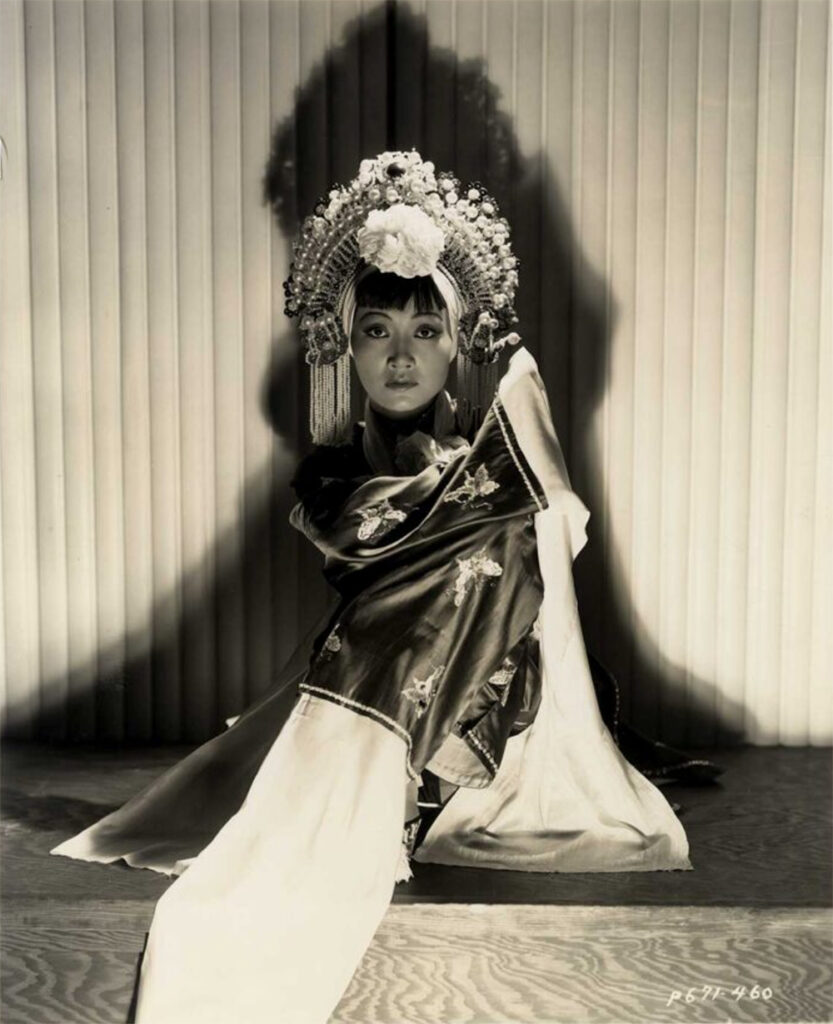
In 1935, Wong was dealt the most severe disappointment of her career, when Metro-Goldwyn-Mayer refused to consider her for the leading role of the Chinese character O-Lan in the film version of Pearl S. Buck‘s The Good Earth. MGM instead cast Luise Rainer to play the leading role in yellowface, due to the Hays Code anti-miscegenation rules requiring the wife of a white actor, Paul Muni (ironically playing a Chinese character in yellowface), to be played by a white actress. MGM offered Wong a supporting role of Lotus, the seductress, but she refused on principle.
Wong spent the next year touring China, visiting her family’s ancestral village and studying Chinese culture. In the late 1930s, she starred in several B movies for Paramount Pictures, portraying Chinese and Chinese Americans in a positive light.
After the War
After a six-year absence, Wong returned to film the same year with a small role in a B movie called Impact. From August 27 to November 21, 1951, Wong starred in a detective series that was written specifically for her, the DuMont Television Network series The Gallery of Madame Liu-Tsong, in which she played the title role that used her birth name. Wong’s character was a dealer in Chinese art whose career involved her in detective work and international intrigue. The ten half-hour episodes aired during prime time, from 9:00 to 9:30 pm. Although there were plans for a second season, DuMont canceled the show in 1952. No copies of the show or its scripts are known to exist.
Wong was scheduled to play the role of Madame Liang in the film production of Rodgers and Hammerstein‘s Flower Drum Song, but was unable to take the role due to her health issues. On February 3, 1961, at the age of 56, Anna died of a heart attack as she slept at home in Santa Monica, two days after her final screen performance on television’s The Barbara Stanwyck Show.
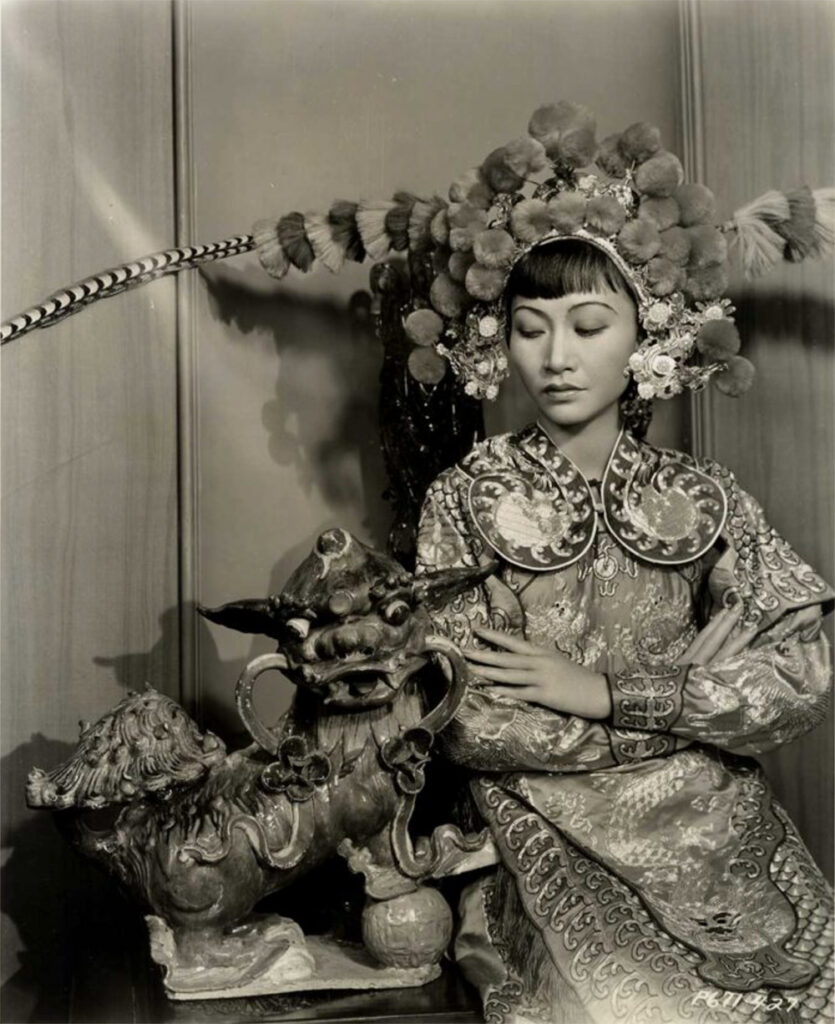
A Contribution
For her contribution to the film industry, in 1960 Anna May Wong received a star at 1708 Vine Street on the inauguration of the Hollywood Walk of Fame . She is also depicted, larger-than-life, along with the actresses Dolores del Río (Hispanic American), Dorothy Dandridge (African American), and Mae West (White American) as one of the four supporting pillars of the sculpture, “Gateway to Hollywood”, located on the southeast corner of Hollywood Boulevard and La Brea Avenue, .
For decades after her death, Anna May Wong was remembered principally for the stereotypical “Dragon Lady” and demure “Butterfly” roles that she was often given. Her life and career were re-evaluated in the years around the centennial of her birth in three major literary works and a comprehensive retrospectives of her films held in New York City at the Museum of Modern Art and the American Museum of the Moving Image .
Reference: Wikipedia
In 2020, her life story was told as part of PBS’s documentary Asian Americans.
- African American Movie Memorabilia
- African Americana
- Black History
- Celebrating Women’s HistoryI Film
- Celebrity Photographs
- Current Exhibit
- Famous Female Vocalists
- Famous Hollywood Portrait Photographers
- Featured
- Film & Movie Star Photographs
- Film Noir
- Film Scripts
- Hollywood History
- Jazz Singers & Musicians
- LGBTQ Cultural History
- LGBTQ Theater History
- Lobby Cards
- Movie Memorabilia
- Movie Posters
- New York Book Fair
- Pressbooks
- Scene Stills
- Star Power
- Vintage Original Horror Film Photographs
- Vintage Original Movie Scripts & Books
- Vintage Original Publicity Photographs
- Vintage Original Studio Photographs
- WalterFilm
